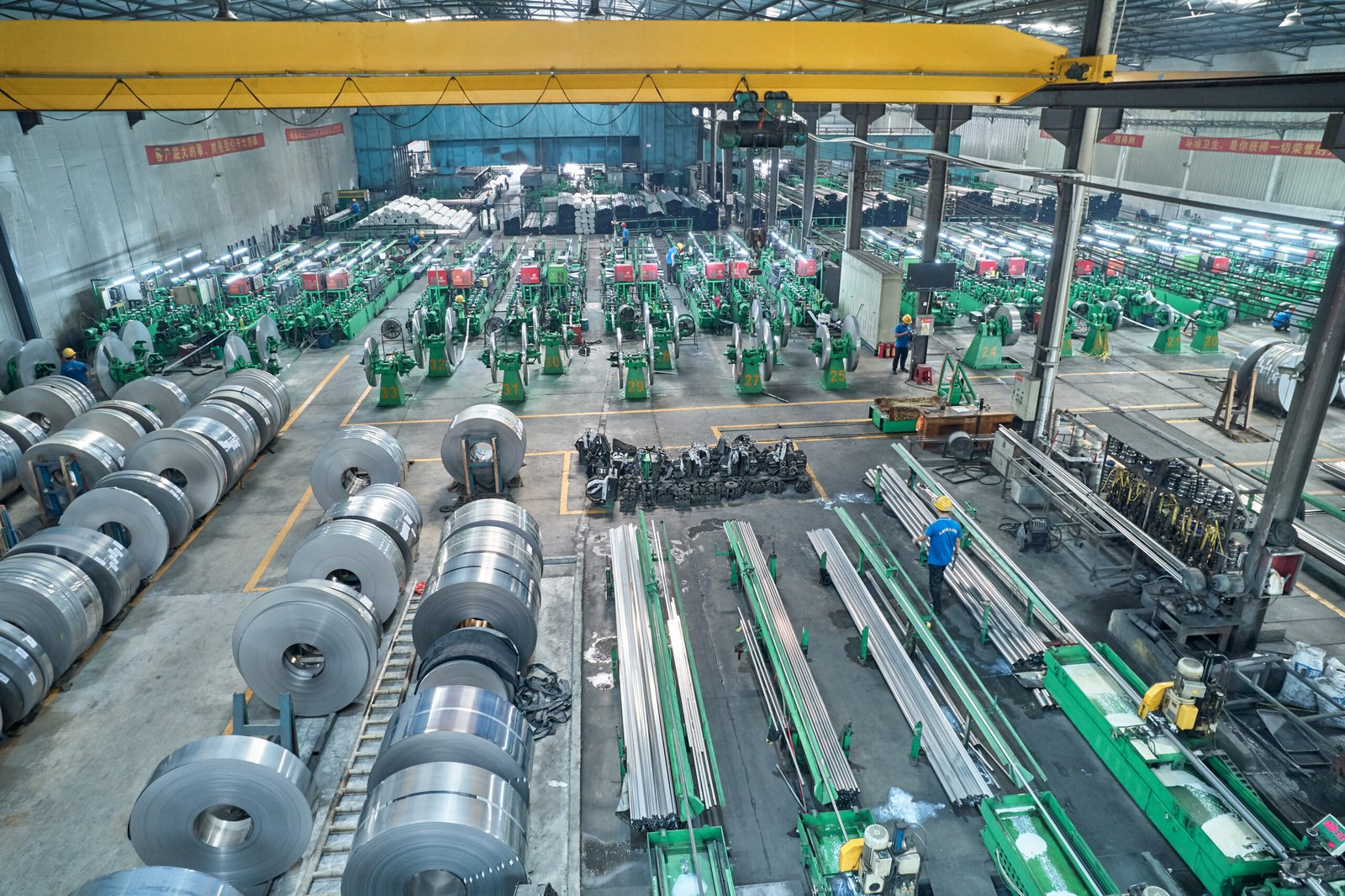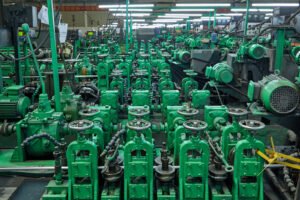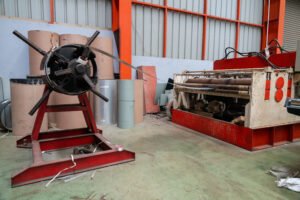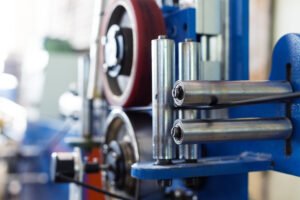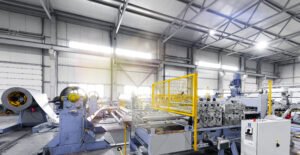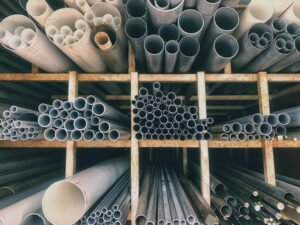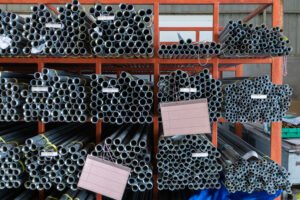Hydrostatic vs Pneumatic Pressure Testing Standards (ASTM A999)

Are you facing the critical decision of how to validate the integrity of your stainless steel pipes? The choice between hydrostatic and pneumatic testing under ASTM A999 standards is a pivotal one, directly impacting project safety, timelines, and costs, leaving many engineers questioning the optimal path forward.
ASTM A999 provides general requirements for alloy and stainless steel pipes, mandating a pressure test to ensure integrity. While it specifies a hydrostatic test as the default, it allows for alternative non-destructive tests, including pneumatic tests, if agreed upon by the purchaser and manufacturer, ensuring fitness for service.
Choosing the right test is more than a line item on a quality checklist; it's a fundamental statement about your commitment to safety and operational excellence. An incorrect choice can introduce risks of catastrophic failure or subtle, undetected leaks that compromise your system over time. As we navigate the complexities of global supply chains at MFY, we’ve guided countless clients through this decision-making process, ensuring they not only comply with standards but also select the most appropriate method for their unique application. This guide will demystify the technical nuances and practical implications of each test, empowering you to make a confident and secure choice.
At MFY, we don't just supply stainless steel tubes; we deliver certainty. The integrity of every pipe we produce is paramount, and that integrity is proven through rigorous testing. ASTM A999, "Standard Specification for General Requirements for Alloy and Stainless Steel Pipe," serves as a foundational text in our quality assurance process. This standard is not just a document to us; it's a commitment to our clients that the materials they receive are fit for purpose and safe for operation. A deep understanding of these standards is crucial, as misinterpretation can lead to significant consequences, from project delays to severe safety hazards. This is why I often spend time with our clients, particularly engineering contractors, to walk them through these requirements. It's about building a partnership based on shared knowledge and a mutual commitment to quality, ensuring the final application, whether a high-purity pharmaceutical line or a critical structural component, performs flawlessly under pressure.
What are the key components of ASTM A999 relating to pressure testing?
Feeling uncertain about how ASTM A999 governs the pressure testing of your stainless steel pipes? This ambiguity can lead to compliance issues and safety oversights. Understanding the specific clauses is crucial for ensuring your materials are tested correctly and meet all contractual and safety requirements.
ASTM A999 mandates that each pipe undergo a pressure test. It specifies the hydrostatic test as the standard method, requiring the pipe to withstand a set pressure without leakage for a minimum duration. It also permits the substitution of a non-destructive electric test upon purchaser agreement.
This standard acts as the bedrock for ensuring pipe integrity, but its language allows for flexibility that requires careful consideration. For project managers and engineers, navigating these options—hydrostatic, pneumatic, or other non-destructive testing (NDT)—is a critical task. For example, a client of ours in the Middle East, involved in constructing a large-scale desalination plant, was initially focused solely on hydrostatic testing. However, the project specifications for certain sections, where residual moisture was a concern for subsequent processes, necessitated a different approach. By closely examining the allowances within ASTM A999 and collaborating with their engineering team, we helped them specify pneumatic testing for those critical segments. This collaborative approach ensured they met both the overarching safety requirements of the standard and the specific operational needs of their facility. This experience underscores the importance of not just reading the standard but truly understanding its practical application and the collaborative dialogue it encourages between manufacturer and end-user. It’s this deep, application-specific understanding that transforms a standard from a mere requirement into a powerful tool for project success.
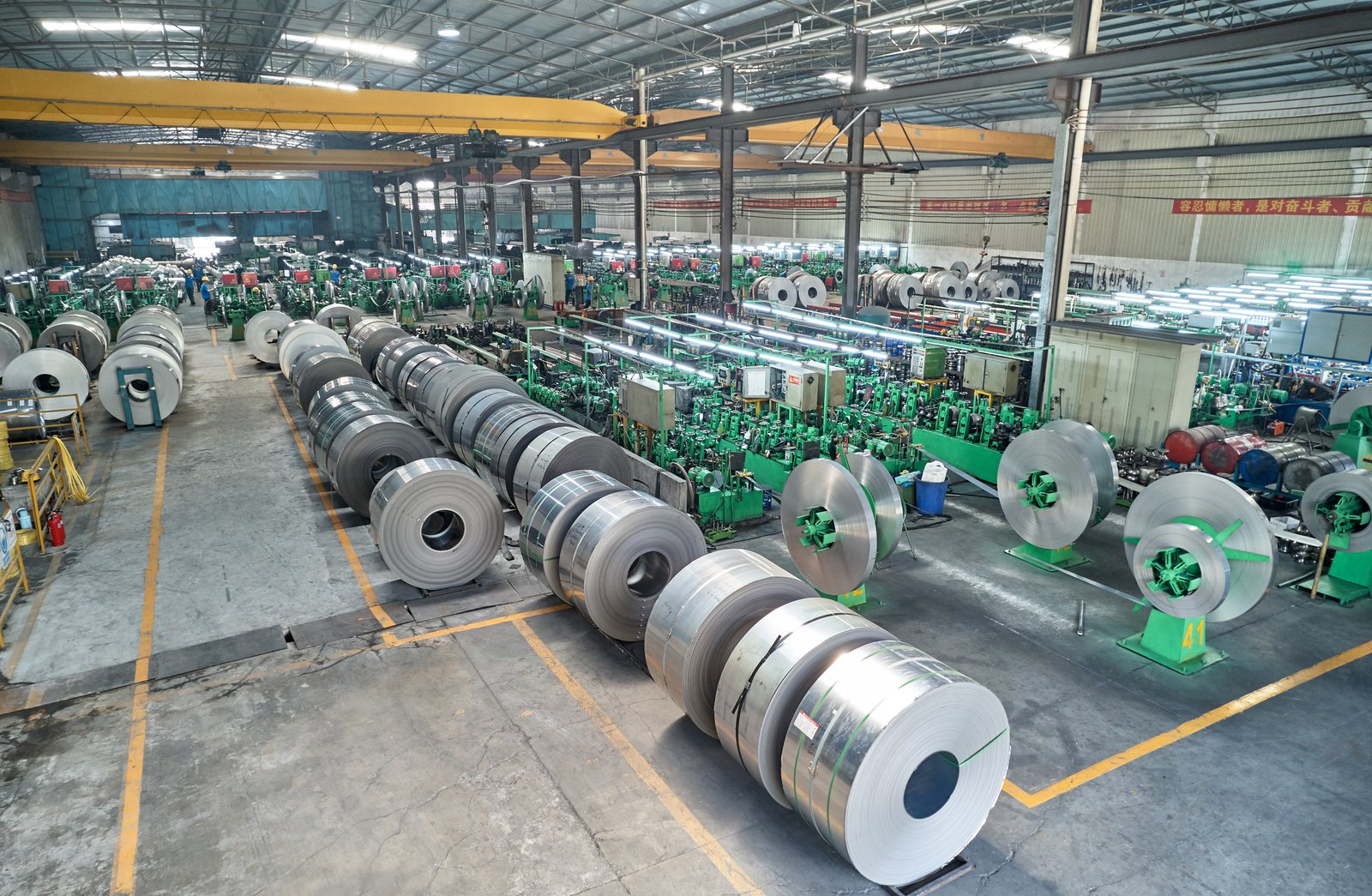
The nuances of ASTM A999 are best understood by breaking them down into their core functional components. This isn't just about a pass/fail test; it's about a comprehensive framework designed to guarantee that the pipe you specify is the pipe you receive, in terms of performance and safety. For our clients, whether they are distributors in India or construction contractors in Russia, grasping these details is what allows them to build, install, and operate with confidence. The standard is structured to provide a baseline of quality while allowing for the specific needs of an application to be met through clear communication and agreement. This adaptability is one of its greatest strengths, but it also places a responsibility on the purchaser to be well-informed. As a manufacturer, we see it as part of our role to facilitate this understanding, ensuring a seamless flow of information from our production lines to their project sites. We believe an educated customer is the best partner, and delving into the specifics of ASTM A999 is the first step toward building that strong, trust-based relationship that is the hallmark of MFY's business philosophy.
The Hydrostatic Test Mandate
ASTM A999, Section 22, explicitly outlines the requirement for a hydrostatic test for every length of pipe. This is the default, baseline requirement established to verify two primary attributes: the pipe's strength to resist a specified internal pressure and its freedom from leaks. The standard dictates the test pressure calculation, which is based on the pipe's minimum specified yield strength and its dimensions (diameter and wall thickness). The formula ensures that the test does not stress the material beyond a safe percentage of its elastic limit, typically not exceeding 90% of the specified minimum yield strength (SMYS). The test must be held for a minimum of 5 seconds, during which the pipe is visually inspected for any signs of leakage.
This mandate serves as the industry's primary assurance of quality. I recall a project with an equipment integrator for the food and beverage industry in Southeast Asia. They were manufacturing high-purity processing skids where any product contamination from a leak would be catastrophic. Their quality protocol strictly adhered to the hydrostatic test specified in ASTM A999. They understood that this test provides undeniable physical proof that the pipe can handle the operational pressures of their system. Their end-client, a major global beverage brand, required full documentation of these tests for every single component, tracing back to the material certificates.
For MFY, fulfilling this mandate means more than just running water through a pipe. Our testing bays are calibrated to maintain precise pressures, and our quality inspectors are rigorously trained to detect even the most minute signs of leakage. We document every test, providing our clients with the transparent, traceable data they need to satisfy their own quality systems and any regulatory bodies. This isn't just a procedural step; it's the final validation of our entire manufacturing process, from raw material selection to the final weld.
The Provision for Non-Destructive Electric Testing (NDET)
A crucial, yet sometimes overlooked, component of ASTM A999 is the provision that allows for a non-destructive electric test (NDET) to be used in lieu of the hydrostatic test. This is not an automatic substitution; it must be explicitly specified in the purchase order. The standard allows for methods like eddy current or ultrasonic testing to be used as alternatives. These technologies do not use pressure but instead scan the pipe's entire volume to detect imperfections such as cracks, voids, or inclusions that could compromise its integrity under pressure.
This option is particularly valuable in applications where introducing water into the pipe is undesirable. Consider a recent project we supplied for a contractor building a cryogenic system. Any residual moisture from a hydrostatic test could freeze during operation, causing blockages or even material damage. By mutually agreeing to use ultrasonic testing as permitted by ASTM A999, we were able to provide them with pipes that were fully certified for integrity without the risk of water contamination. The NDET process provided a comprehensive map of the pipe's wall, offering a different, yet equally valid, form of quality assurance.
The decision to opt for NDET requires a sophisticated understanding of both the application's needs and the capabilities of the testing method. It represents a collaborative approach to quality assurance, where we, the manufacturer, work with the client to select the most appropriate method. Our role at MFY is to provide clear data on the capabilities and limitations of each NDET method we offer, helping our clients make an informed decision that aligns with their technical requirements, project specifications, and budget. This flexibility within the standard is a key enabler of innovation and efficiency.
Purchaser's Role and Overriding Authority
ASTM A999 is not a one-way street. It strategically places significant authority in the hands of the purchaser. The standard repeatedly uses phrases like "unless otherwise specified in the purchase order." This gives the client the power to define more stringent requirements than those laid out in the standard itself. If a project's design pressure requires a test pressure higher than the standard calculation, or a longer test duration, the purchaser can specify this, and it becomes the binding requirement.
This principle came to the forefront during our work with a major engineering, procurement, and construction (EPC) contractor for an offshore platform in the Middle East. Due to the extreme environmental conditions and the critical nature of the application, their internal standards mandated a hydrostatic test duration of 60 minutes, far exceeding the 5-second minimum of ASTM A999. They also required the test pressure to be 1.5 times the maximum design pressure of their system. By clearly stating these requirements in their purchase order, their specifications legally superseded the general requirements of the standard.
At MFY, we are structured to accommodate such specific demands. Our agile production and quality systems allow us to customize testing protocols to meet these elevated client requirements. We view the purchase order as the ultimate guide for a specific contract. This component of the standard reinforces the partnership model we champion. It ensures that the final product is not just compliant with a general industry standard but is perfectly tailored and verified for the specific, demanding conditions of the end-use application, providing our clients with the highest possible level of assurance.
Hydrostatic test is ASTM A999 defaultПравда
ASTM A999 specifies hydrostatic testing as the standard method for pressure testing pipes unless otherwise agreed.
Pneumatic tests always replace hydrostaticЛожь
Pneumatic tests are only permitted when specifically agreed between purchaser and manufacturer, not as automatic replacements.
How does hydrostatic pressure testing operate under ASTM A999 standards?
Concerned about applying hydrostatic testing correctly? Misinterpreting the procedure can lead to invalid test results or, worse, damage to the very pipes you're trying to qualify. A flawed test provides a false sense of security and can have serious safety and financial repercussions.
Hydrostatic testing under ASTM A999 involves filling a pipe with water, purging all air, and pressurizing it to a calculated level based on its material properties and dimensions. This pressure is held for a minimum of five seconds to visually inspect for any leaks.
The process, while straightforward in principle, demands meticulous execution to ensure valid and safe results. It is the most common and widely trusted method for verifying the leak tightness and strength of newly manufactured stainless steel tubes. I’ve stood on the factory floor and watched this process thousands of times, and its effectiveness lies in its simplicity. Water is nearly incompressible, meaning that if a flaw exists, it will reveal itself as a visible leak with a corresponding drop in pressure, without the explosive danger associated with compressed gas. This inherent safety feature is why it remains the default standard for countless applications, from municipal water lines to industrial chemical processing. It’s a tangible, undeniable proof of integrity that engineers and contractors have relied upon for decades.

Embarking on a hydrostatic test is a critical step in the quality assurance journey of any stainless steel pipe. At MFY, this process is integrated directly into our production flow, serving as a final gatekeeper before a pipe can be certified. To a casual observer, it might look like a simple procedure of filling a pipe with water and cranking up the pressure. However, for an engineer or a quality inspector, it is a carefully orchestrated sequence of events where every variable matters. The temperature of the water, the calibration of the pressure gauges, the thoroughness of the visual inspection—each element is critical to the validity of the test. I often explain to our clients, especially distributors who need to articulate our quality processes to their own customers, that the hydrostatic test is where the theoretical properties of the steel meet the physical reality of the manufactured product. It's the moment of truth, confirming that the combination of raw material, welding, and forming has resulted in a product capable of performing its duty safely and reliably. A successful hydrostatic test is not just a pass; it's a promise of performance delivered.
Pre-Test Preparations and Calculation of Test Pressure
The foundation of a reliable hydrostatic test is laid long before any water enters the pipe. The first step involves a thorough visual inspection of the pipe itself, checking for any surface defects that could compromise the test. All connections, end caps, and seals used for the test must be rated for a pressure significantly higher than the test pressure itself. Critically, the standard requires the calculation of the test pressure using a specific formula: $P = \frac{2St}{D}$, where P is the hydrostatic test pressure, S is the allowable stress for the material (typically a percentage of the specified minimum yield strength SMYS1, as defined in the relevant product specification), t is the specified wall thickness, and D is the specified outside diameter. For example, for a standard 304L stainless steel pipe, the allowable stress 'S' might be set at 16,700 psi. For a 4-inch (101.6mm) Schedule 40 pipe with a wall thickness of 0.237 inches (6.02mm), the test pressure would be calculated based on these inputs. This calculation ensures the test is rigorous enough to prove integrity but remains safely below the point of plastic deformation.
The Testing Cycle: Filling, Pressurizing, and Inspection
With the pressure calculated, the test cycle begins. The pipe is securely positioned in the test bay and filled with the test medium, which is almost always water. A critical and often underappreciated step is venting the pipe to ensure all air is purged. Trapped air is compressible and can store a significant amount of energy, creating a safety hazard and potentially affecting the accuracy of the pressure reading. Once the pipe is full and air-free, the pressure is gradually increased to the calculated test pressure. The rate of pressurization is controlled to prevent shock loading. As per ASTM A999, this pressure must be held for a minimum of five seconds. During this holding period, our trained inspectors meticulously examine the entire surface of the pipe, especially the weld seam, for any signs of weeping, leaks, or visible deformation. For a client like an engineering contractor in India building a water treatment facility, the visual confirmation of a leak-free test is the most crucial output. They need to be certain that the hundreds of joints and lengths of pipe installed will not fail once the system is commissioned.
Post-Test Procedures and Acceptance Criteria
Once the inspection is complete and the pipe has successfully held pressure without leakage for the required duration, the test is concluded. The pressure is slowly released, and the water is drained from the pipe. The acceptance criterion is simple and absolute: there shall be no leakage through the pipe wall or at the end seals during the test. Any visible leakage constitutes an immediate failure. A failed pipe is segregated, and a root cause analysis is performed to determine the reason for the failure—was it a material flaw, a welding imperfection, or another issue? Following a successful test, the pipe is dried to the client's specification. For many applications, standard air drying is sufficient. However, for high-purity or sensitive applications, like the ones we supply to equipment integrators for the pharmaceutical industry, specific drying procedures using dry, oil-free air may be required to prevent any contamination. This final step is just as important as the test itself, ensuring the pipe arrives at the customer's facility ready for immediate, safe installation.
Water is used for safetyПравда
Water's incompressibility makes it safer than gas for hydrostatic testing, as it prevents explosive hazards while revealing leaks.
Five-minute pressure holdЛожь
ASTM A999 requires only a five-second (not five-minute) pressure hold during hydrostatic testing to inspect for leaks.
What is the process of pneumatic pressure testing according to ASTM A999?
Are you considering pneumatic testing but worried about the risks? Unlike hydrostatic testing, using a compressible gas like air introduces significant stored energy, making safety a paramount concern. Improper procedures can lead to catastrophic, explosive failures rather than simple leaks, posing extreme danger to personnel.
Pneumatic testing, an alternative to hydrostatic testing under ASTM A999 upon agreement, uses compressed air or an inert gas to pressurize the pipe. The process involves a slow, staged pressure increase with leak checks at intermediate steps before reaching the final, lower test pressure.
The decision to use pneumatic testing is never taken lightly. It's reserved for applications where the presence of water is absolutely intolerable, such as in cryogenic systems, certain chemical processing lines, or instrumentation pipelines. I remember a case involving a client in Russia who was fabricating components for a natural gas processing plant. Their specifications strictly forbade any contact with water to prevent the formation of hydrates. For them, pneumatic testing was not just an option; it was a necessity. This required a completely different level of safety protocol and procedural discipline at our facility, highlighting the critical importance of a methodical, step-by-step approach when dealing with the high-stakes world of compressed gas testing.
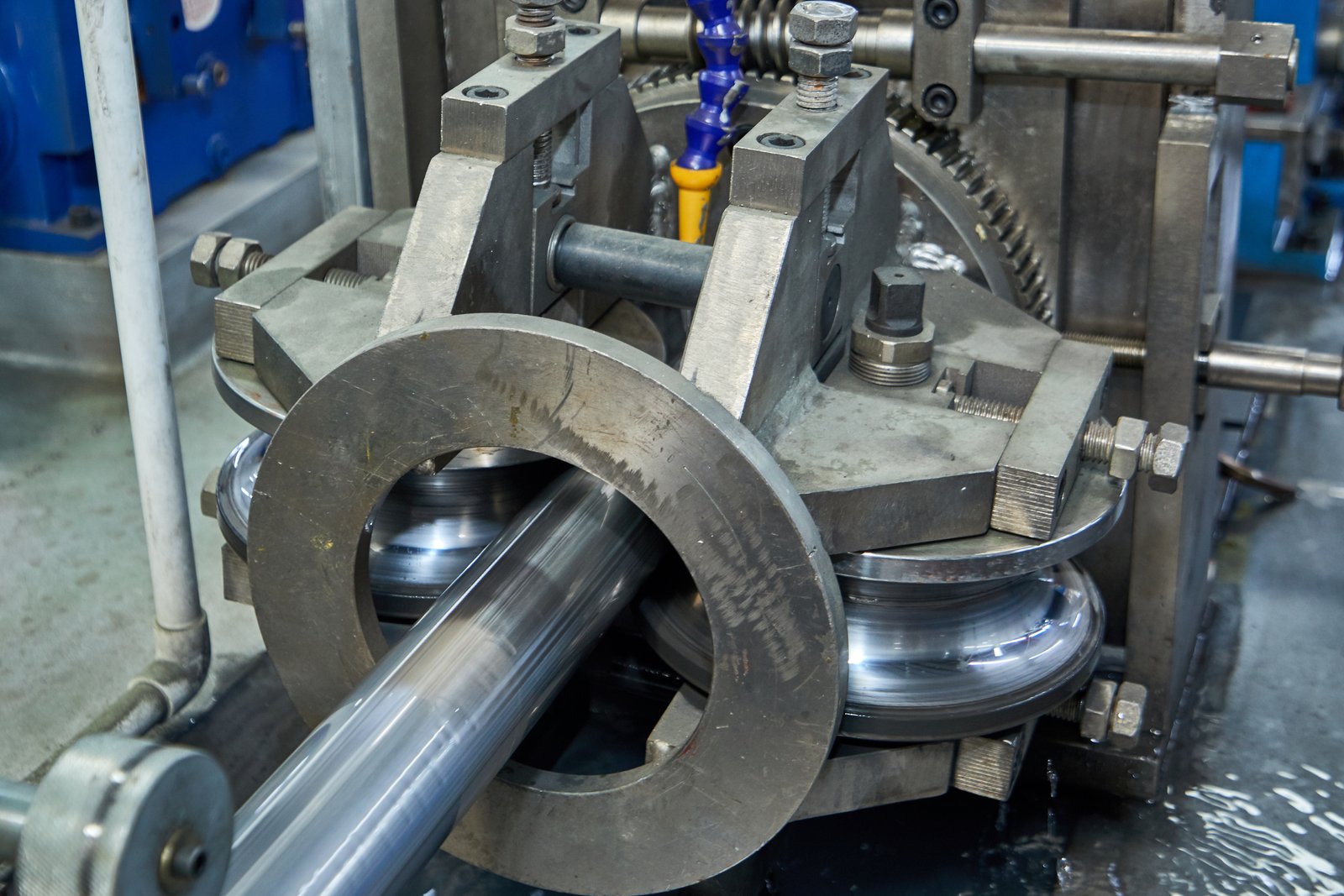
While ASTM A999 identifies hydrostatic testing as the default, its flexibility in allowing alternatives like pneumatic testing is crucial for modern industrial applications. However, this flexibility comes with a heavy burden of responsibility. The physics of pneumatic testing are fundamentally different and inherently more hazardous than those of hydrostatic testing. A liquid will not compress, so a leak results in a simple drip and pressure loss. A gas, however, stores an immense amount of potential energy when compressed. A rupture during a pneumatic test can release this energy almost instantaneously, resulting in a violent, explosive failure. Because of this, when a client specifies pneumatic testing, our entire approach to quality control shifts. The focus expands from just leak detection to an overriding emphasis on hazard mitigation, procedural control, and personnel safety. Every step, from sealing the pipe to the final sign-off, is governed by a heightened sense of caution and a strict adherence to proven safety protocols that go beyond the basic requirements of the standard.
Rationale and Pre-Test Safety Protocols
The primary reason to select pneumatic testing is to avoid liquid contamination. This is critical in systems that handle gases, serve cryogenic purposes, or where processes are sensitive to moisture. Before a pneumatic test can even begin, a comprehensive safety review and hazard analysis2 must be conducted. This is not just a recommendation; it is an absolute necessity. The test area must be clearly demarcated and restricted to authorized personnel only. All non-essential personnel are evacuated to a safe distance. A detailed test plan is written and approved, which includes the test medium (typically oil-free dry air or nitrogen), the sequence of pressurization, hold times, and emergency depressurization procedures. For instance, a major manufacturer of industrial gas equipment we work with requires a documented "exclusion zone" radius calculated based on the pipe's volume and the maximum test pressure, ensuring personnel safety in the event of a failure. All gauges and relief valves must be calibrated immediately prior to the test to ensure they are functioning correctly. The pressure relief valve is a critical component, set to a pressure slightly above the test pressure (e.g., 110%) to prevent accidental over-pressurization.
Staged Pressurization and Leak Detection
Unlike a hydrostatic test where pressure is often raised in a single, steady ramp-up, a pneumatic test is always conducted in stages. This methodical approach is a key safety measure. Typically, the pressure is first raised to a preliminary low level, often around 25 psig (170 kPa), and held while a preliminary leak check is performed using a soap solution or an ultrasonic leak detector on all joints and seals. This initial check can identify major leaks at a low, relatively safe pressure. After a successful initial check, the pressure is increased incrementally. For example, the pressure might be raised in steps to 50%, then 75%, and finally 100% of the required test pressure. The test pressure itself is typically lower than for a hydrostatic test, often specified by other codes like ASME B31.33 at 110% of the design pressure, rather than 150%. A hold period is observed at each stage to allow the pipe material to stabilize. At the full test pressure, the holding time is maintained for a prescribed period, during which a thorough leak inspection is conducted across the entire pipe surface. This staged approach minimizes the risk by allowing potential issues to be caught before the maximum stored energy is reached.
Test Completion and Controlled Depressurization
Once the holding period at the final test pressure is complete and no leaks are detected, the test is officially concluded. However, the process is far from over. The depressurization phase is just as critical as the pressurization phase. The stored energy must be released slowly and in a controlled manner through a designated vent valve. Rapid depressurization can cause a dangerous whipping of hoses or a refrigeration effect (Joule-Thomson effect) that can make components brittle. The pressure is carefully bled down until the gauge reads zero. Only after it is confirmed that the pipe is fully depressurized can the test fittings be removed and the area be declared safe. For a client supplying air separation units, the post-test documentation is as vital as the test itself. They require a full report detailing the pressure stages, hold times, inspection results, and a chart recording of the pressure throughout the test, providing a complete, auditable record of the pipe's integrity and the safety of the procedure.
Pneumatic testing uses compressed gasПравда
Pneumatic testing employs compressed air or inert gases like nitrogen, unlike hydrostatic testing which uses liquids.
Pneumatic tests reach higher pressures than hydrostaticЛожь
Pneumatic test pressures are typically lower (110% design pressure) compared to hydrostatic tests (150% design pressure) due to safety concerns.
What is the process of pneumatic pressure testing according to ASTM A999?
Are you struggling to weigh the reliability of a hydrostatic test against the inherent risks of a pneumatic one4? Making the wrong choice can lead to undetected flaws if the test isn't sensitive enough, or a catastrophic accident if safety protocols are inadequate.
Hydrostatic testing is significantly safer due to the incompressibility of water, which prevents explosive failure. It is also highly reliable for detecting leaks. Pneumatic testing, while effective, carries a high risk of explosive energy release, demanding extensive safety measures for its outcomes to be considered reliable.
The comparison between these two tests is a classic engineering trade-off between safety and specific operational needs5. From my experience at MFY, the conversation with a client always begins with hydrostatic testing as the default for a reason: safety is non-negotiable. The visual confirmation of a leak from a water-filled pipe is definitive and poses minimal risk. However, for a client in a high-tech field like semiconductor manufacturing, where a single drop of water could ruin a sensitive process, the risks of pneumatic testing must be carefully managed because there is no other choice. Reliability in this context isn't just about finding a leak; it's about the confidence that the chosen test method was executed flawlessly and safely, providing a true assessment of the pipe's integrity without introducing new problems.

When guiding a client, whether it's a large construction contractor or a specialized equipment integrator, through the choice between hydrostatic and pneumatic testing, the discussion invariably pivots to a detailed analysis of risk versus reward in pressure testing6. The "reward" is a properly certified pipe, fit for its intended service. The "risk" is multifaceted, encompassing personnel safety, equipment damage, project delays, and reputational harm. The reliability of a test's outcome is directly proportional to the control over its procedure. A hydrostatic test is inherently more forgiving; minor procedural deviations are unlikely to cause a disaster. In contrast, a pneumatic test is unforgiving. The slightest oversight in safety protocol or execution can have devastating consequences. Therefore, when we compare the outcomes, we are not just comparing the technical ability to find a leak. We are comparing two vastly different risk profiles and the operational discipline required to manage them. As a supplier, our responsibility is to ensure the client fully comprehends this dynamic, allowing them to make a decision that is not only technically sound but also ethically responsible in terms of safety.
Safety: The Stored Energy Dilemma
The most significant differentiator between the two tests is safety, which is a direct consequence of the test medium's compressibility. Water is an incompressible fluid. If a defect in a pipe fails during a hydrostatic test, the result is a leak. The pressure drops almost instantaneously, and the energy is dissipated with little more than a jet of water. The total stored energy is very low. In stark contrast, a gas like air or nitrogen is highly compressible. A pneumatic test at 110 psi stores approximately 200 times more energy than a hydrostatic test at the same pressure and volume. If a pipe ruptures during a pneumatic test, this stored energy is released explosively, creating a shockwave and turning fragments of the pipe into high-velocity projectiles. This is why pneumatic testing is often likened to handling a controlled bomb. I have seen safety reports from the industry detailing catastrophic failures during pneumatic tests that resulted in significant damage and serious injuries. This fundamental difference in stored energy dictates that hydrostatic testing is, by an order of magnitude, the safer option and should always be the first choice unless process conditions absolutely forbid it.
Reliability in Leak Detection
In terms of finding leaks, both methods can be highly effective, but they have different strengths. Hydrostatic testing is excellent for identifying through-wall leaks of all sizes. The visual evidence of a water drip is unambiguous. Furthermore, water's higher viscosity and surface tension compared to a gas mean it can sometimes seal very fine, crack-like defects, which could be a potential downside. However, for general leak tightness, it is exceptionally reliable. Additives like fluorescent dyes can be used to enhance the visibility of very small leaks. Pneumatic testing is extremely sensitive for detecting very small leaks, often referred to as "weepers" or "seepers." Because gas molecules are much smaller than water molecules, they can escape through microscopic passages that might temporarily hold water. The common method of applying a soap solution to the exterior makes even the tiniest leak immediately visible as bubbles form. This high sensitivity is a key advantage for systems where even minute levels of gas leakage are unacceptable, such as in vacuum systems or those handling hazardous gases. A typical customer story involves an equipment integrator for the medical device industry; they exclusively use pneumatic testing with helium sniffers for their gas delivery systems, as the required leak-tightness is far beyond what visual hydrostatic inspection can guarantee.
Cost, Complexity, and Post-Test Considerations
The practical considerations of cost and complexity also play a major role in the comparison. Hydrostatic testing is generally less complex to set up but can have hidden post-test costs. The primary medium, water, is inexpensive and readily available. However, after the test, the pipe must be thoroughly cleaned and dried, which adds time and expense, particularly for large or complex piping systems. If not dried properly, residual water can cause corrosion or contaminate the process fluid. Pneumatic testing avoids these issues entirely. There is no need for cleaning or drying, allowing the pipe to be put into service almost immediately. However, the initial setup is more complex and expensive. It requires specialized equipment like high-pressure compressors, pressure relief valves, and potentially the purchase of an inert gas like nitrogen. More importantly, the extensive safety measures—exclusion zones, blast mats, and rigorous procedural controls—add significant time and overhead to the process.
| Характеристика | Hydrostatic Testing | Pneumatic Testing |
|---|---|---|
| Test Medium | Water (or other liquid) | Air or Inert Gas (e.g., Nitrogen) |
| Safety | High (incompressible fluid, low stored energy) | Low (compressible gas, high stored energy, explosive risk) |
| Test Pressure | Typically 1.5x Design Pressure | Typically 1.1x Design Pressure |
| Leak Detection | Excellent (visual drips). Good for general leaks. | Excellent (bubbles/sniffers). Highly sensitive to small leaks. |
| Post-Test Action | Requires thorough cleaning and drying. | No cleaning/drying required. |
| Cost & Complexity | Lower initial cost, simpler setup. Post-test cleaning adds cost/time. | Higher initial cost, complex safety protocols. Faster turnaround. |
| Первичное применение | General purpose, default method for pipes and vessels. | Systems where water contamination is unacceptable (e.g., cryogenic, gas lines). |
Hydrostatic tests are safer than pneumatic testsПравда
Water's incompressibility prevents explosive failures, making hydrostatic testing inherently safer with lower stored energy.
Pneumatic tests detect larger leaks betterЛожь
Pneumatic testing excels at detecting microscopic leaks (via bubble formation), while hydrostatic is better for visible through-wall leaks.
What are the recommended applications for each type of pressure testing under ASTM A999?
Are you unsure which pressure test is right for your specific project? Choosing hydrostatic testing for a moisture-sensitive system can cause process contamination, while using pneumatic testing without justification introduces unnecessary risk and cost. This decision directly impacts your project's safety and operational success.
Hydrostatic testing is the recommended default for most applications, including water lines, process piping, and structural components, due to its superior safety. Pneumatic testing is reserved for specific applications where liquid contamination is unacceptable, such as gas/air systems, cryogenic services, and high-purity pipelines.
The right choice is entirely context-driven. As a supplier of stainless steel tubes to a diverse range of industries, we at MFY see this firsthand. For a construction contractor building a new commercial high-rise, we would always recommend and perform hydrostatic testing on the plumbing and fire suppression systems. The method is safe, effective, and aligns perfectly with the system's purpose. Conversely, for a manufacturing company that integrates our tubes into their compressed air delivery systems for a factory floor, pneumatic testing is the more logical, albeit more hazardous, choice to prevent downstream moisture issues in their pneumatic tools and equipment. The application dictates the test.
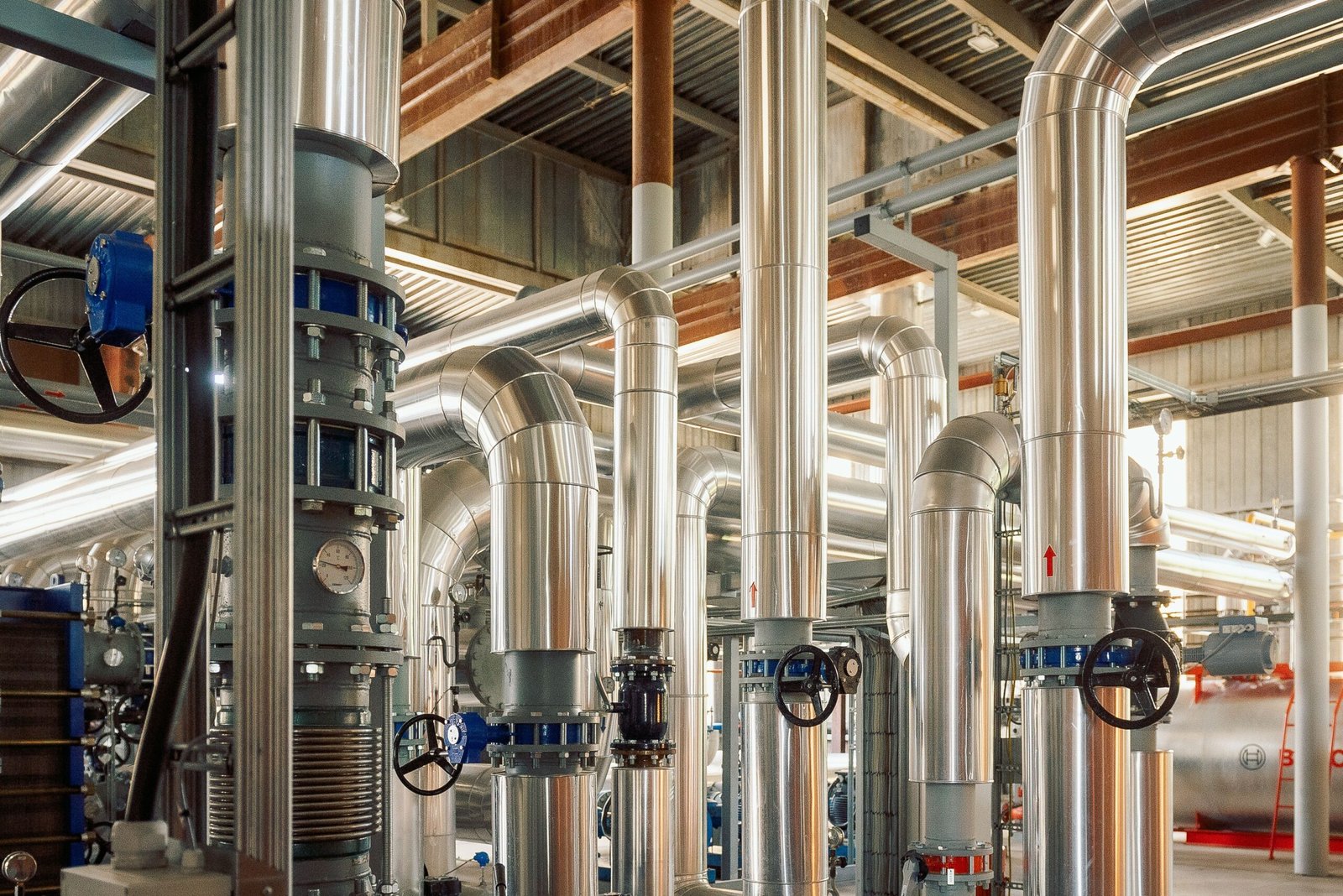
The selection of a testing method is a critical decision point in the engineering process, where the theoretical requirements of a system meet the practical realities of quality assurance. It's a decision that balances the absolute priority of safety with the specific functional needs of the final application. At MFY, our client conversations often revolve around this very topic. We don’t just take an order for pipes; we engage in a technical dialogue to ensure the specified testing protocol is genuinely the best fit. A distributor in the Middle East supplying pipes for an oil and gas project will have vastly different requirements than an equipment integrator in Southeast Asia building pharmaceutical-grade water systems. Our role in the supply chain is to provide not just the physical product but also the expertise to help our clients navigate these choices. This consultative approach ensures that the final product is not only compliant with ASTM A999 but is also perfectly suited and safely validated for its intended environment, providing long-term reliability and peace of mind.
Dominant Use-Cases for Hydrostatic Testing
Hydrostatic testing is the workhorse of the pressure testing world, and for good reason. Its inherent safety and straightforward effectiveness make it the ideal choice for the vast majority of piping applications. Any system designed to convey water or other liquids is a natural candidate. This includes municipal water distribution networks, fire suppression sprinkler systems, and industrial water cooling lines. In my experience, over 90% of the stainless steel pipes we ship from MFY are certified using hydrostatic testing. For example, we supply a significant volume of pipe to engineering contractors involved in building large-scale infrastructure projects like bridges and stadiums, where our tubes are used for drainage and plumbing. The tests confirm both the weld integrity and the pipe's ability to handle the required pressures, and the presence of water post-test is of no concern. Similarly, in the chemical processing industry, for lines carrying water-based solutions, acids, or other liquids, hydrostatic testing is the standard and most reliable method to ensure the integrity of the containment system before introducing potentially hazardous chemicals. The test provides a clear, unambiguous pass/fail result that is universally accepted by regulators and clients. Data from the Pipeline and Hazardous Materials Safety Administration (PHMSA)7 in the US consistently shows that pre-service hydrostatic testing is a critical step in preventing future incidents in liquid pipelines.
Niche and Critical Applications for Pneumatic Testing
Pneumatic testing is a specialized tool for situations where hydrostatic testing's primary medium—water—is the enemy. Its applications are niche but absolutely critical. The most common use case is in systems designed to transport gases. This includes industrial compressed air systems, nitrogen or oxygen delivery lines, and natural gas piping within a facility. I recall working with a client who manufactures industrial gas separation skids. Their specifications demanded pneumatic testing with nitrogen to ensure that no oxygen or moisture, which would be contaminants, was introduced into the system. Any residual water could disrupt the delicate balance of the pressure swing adsorption process they used. Another critical application is in cryogenic systems designed to handle liquefied natural gas (LNG) or liquid nitrogen. Here, any residual water would freeze, creating ice plugs that could block flow or cause catastrophic damage due to localized pressure build-up. Furthermore, systems requiring extreme cleanliness, such as high-purity piping for the semiconductor or pharmaceutical industries, often specify pneumatic testing to avoid the risk of microbial growth or mineral deposits left behind by water. In these cases, the high risk of pneumatic testing is justified by the even higher risk of process failure or contamination from using a liquid medium.
Making the Decision: A Collaborative Approach
Ultimately, the decision between hydrostatic and pneumatic testing is a collaborative one between the manufacturer, the engineering contractor, and the end-user. The process should begin with the service conditions of the pipe. What fluid will it carry? What are the operating pressures and temperatures? Are there any cleanliness or purity requirements? The default choice should always be hydrostatic testing due to its immense safety advantages. A switch to pneumatic testing should only be made if there is a compelling, documented technical reason why the system cannot tolerate a liquid testing medium. This justification should be part of the project's formal risk assessment. For our clients, we often provide a "decision tree" framework. Does the system carry a gas or operate at cryogenic temperatures? If yes, consider pneumatic. Is the system sensitive to moisture or corrosion from water? If yes, consider pneumatic. For all other applications, hydrostatic testing is the recommended path. A recent case study involved an EPC contractor for a power plant. While most of the water and steam piping was hydrostatically tested, the instrument air lines, which controlled critical valves and actuators, were specified for pneumatic testing. This hybrid approach, applying the appropriate test to each specific subsystem, represents best practice and ensures the highest level of both safety and operational readiness for the entire facility. This is the level of detail and partnership MFY strives for with every client.
Hydrostatic testing is safer than pneumaticПравда
Hydrostatic testing uses liquid, which is less compressible and thus safer than pneumatic testing with gas.
Pneumatic testing is the default choiceЛожь
Hydrostatic testing is the default recommendation; pneumatic is only used when liquid contamination is unacceptable.
Заключение
Ultimately, the choice between hydrostatic and pneumatic testing under ASTM A999 hinges on a careful balance of safety and application-specific needs. While hydrostatic testing is the safer, preferred standard, pneumatic testing serves critical, niche applications where liquid contamination is intolerable, demanding rigorous procedural control.
-
Learn about SMYS's role in determining hydrostatic test pressures. ↩
-
Learn the essential safety protocols before pneumatic testing to prevent accidents ↩
-
Discover how ASME B31.3 standard affects pneumatic test pressure specifications ↩
-
Compare the reliability and risks between these two pressure testing methods. ↩
-
Learn how specific operational requirements influence test method selection. ↩
-
Understand the trade-offs in safety and performance for each test method. ↩
-
Discover regulatory insights and safety data from PHMSA ↩
У вас есть вопросы или нужна дополнительная информация?
Свяжитесь с нами, чтобы получить индивидуальную помощь и квалифицированный совет.
